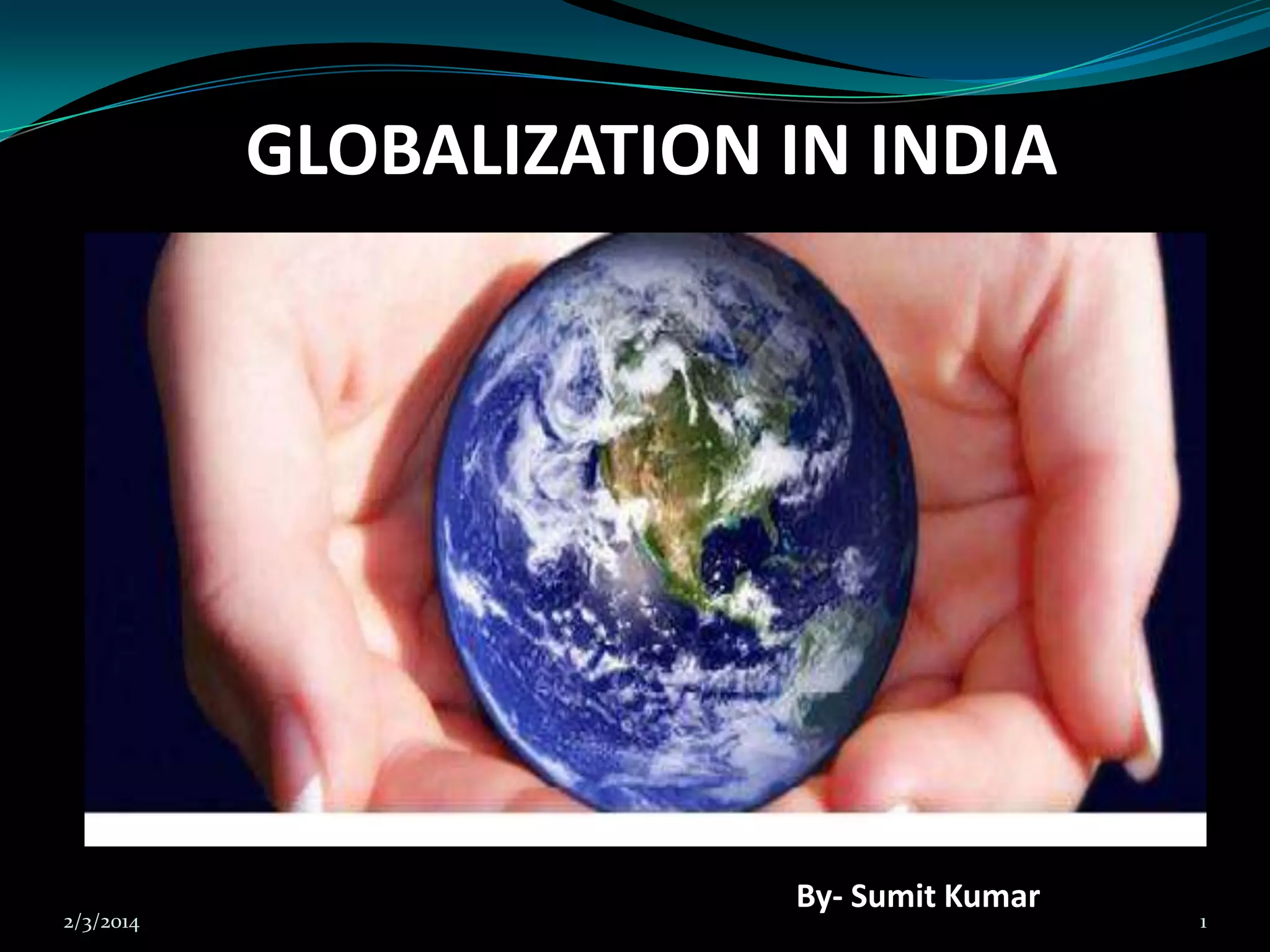Globalization has increased economic interdependence between countries through rising international trade, financial flows, and cultural exchange. In India, globalization has led to both benefits and challenges. It has increased foreign investment and access to technology, but has also resulted in job losses as companies shift production to lower-cost countries. India has pursued economic liberalization policies since the 1990s, leading to strong GDP growth, but growing inequality as well. Key exports include gems, textiles, engineering goods, and oil, while major imports are machinery, oil, and coal. Foreign exchange reserves have risen sharply since the 1990s to over $300 billion.





































